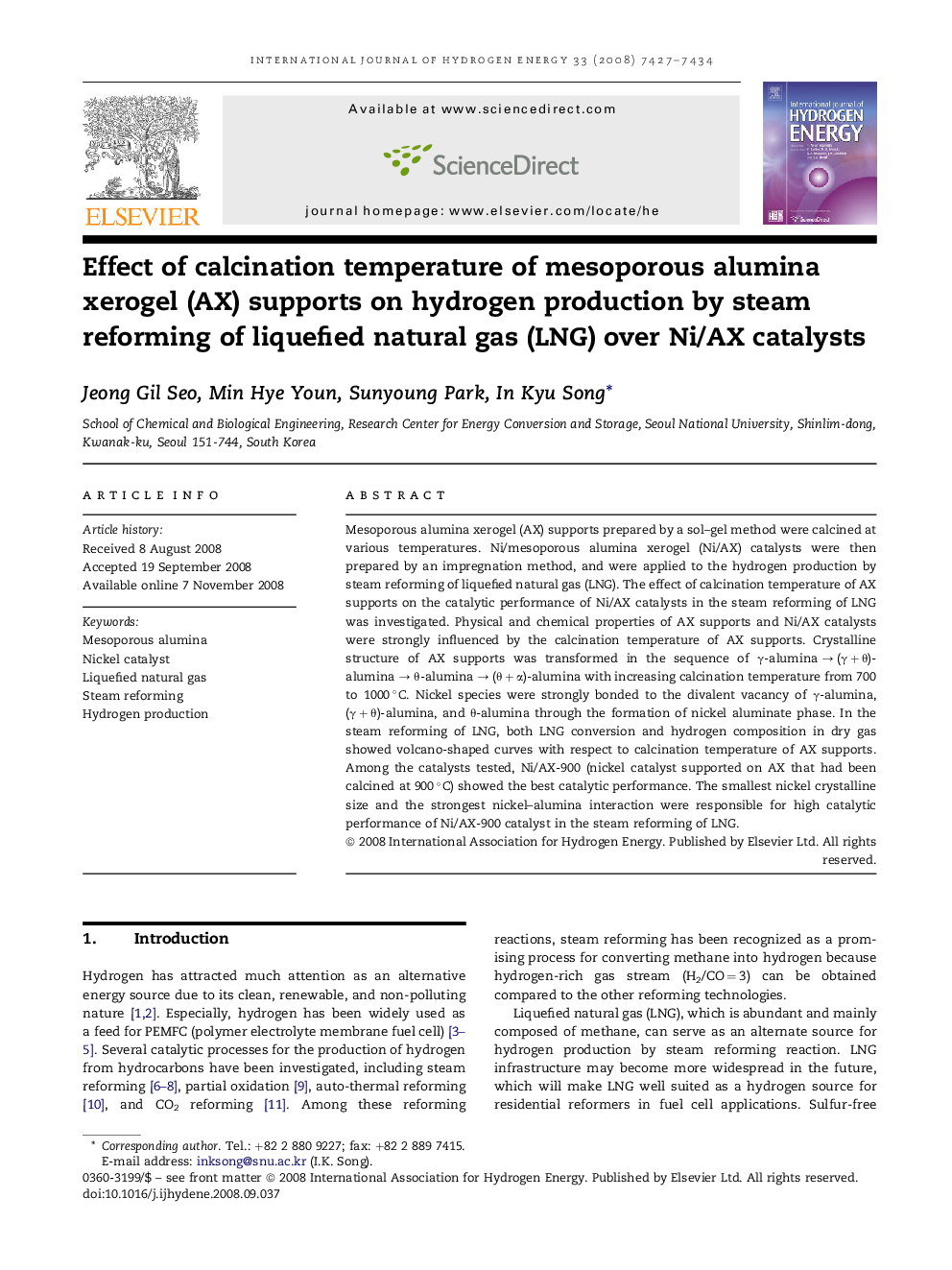| Article ID | Journal | Published Year | Pages | File Type |
|---|---|---|---|---|
| 1281339 | International Journal of Hydrogen Energy | 2008 | 8 Pages |
Mesoporous alumina xerogel (AX) supports prepared by a sol–gel method were calcined at various temperatures. Ni/mesoporous alumina xerogel (Ni/AX) catalysts were then prepared by an impregnation method, and were applied to the hydrogen production by steam reforming of liquefied natural gas (LNG). The effect of calcination temperature of AX supports on the catalytic performance of Ni/AX catalysts in the steam reforming of LNG was investigated. Physical and chemical properties of AX supports and Ni/AX catalysts were strongly influenced by the calcination temperature of AX supports. Crystalline structure of AX supports was transformed in the sequence of γ-alumina → (γ + θ)-alumina → θ-alumina → (θ + α)-alumina with increasing calcination temperature from 700 to 1000 °C. Nickel species were strongly bonded to the divalent vacancy of γ-alumina, (γ + θ)-alumina, and θ-alumina through the formation of nickel aluminate phase. In the steam reforming of LNG, both LNG conversion and hydrogen composition in dry gas showed volcano-shaped curves with respect to calcination temperature of AX supports. Among the catalysts tested, Ni/AX-900 (nickel catalyst supported on AX that had been calcined at 900 °C) showed the best catalytic performance. The smallest nickel crystalline size and the strongest nickel–alumina interaction were responsible for high catalytic performance of Ni/AX-900 catalyst in the steam reforming of LNG.
